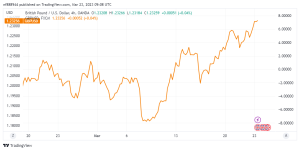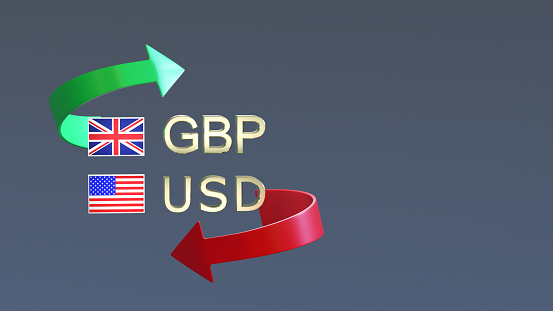GBPUSD has maintained its positive momentum and surged to new multi-week highs over 1.2300. The next large move in the pair is anticipated to be triggered by the Bank of England’s (BOE) policy statement.
After the Fed’s dovish tilt, the Dollar is struggling to find demand.
The US Federal Reserve hiked its benchmark rate by 25 basis points (bps) to a range of 4.75-5% on Wednesday, as predicted. The Fed deleted the phrase that continued rate hikes will be appropriate in its policy statement and instead used more cautious wording stating “some more policy firming may be needed.” Nevertheless, the terminal rate prediction in the dot plot remained steady at 5.1%.
At the press conference, FOMC Chairman Jerome Powell reaffirmed that no rate cuts were planned for this year. Powell, on the other hand, stated that the Credit conditions tightening in the aftermath of Silicon Valley. Bank upheaval may imply that monetary tightening has less work to do.
After some dramatic movements throughout the Fed event. The US Dollar Index remained under significant negative pressure and fell below 102.00 early Thursday. Its lowest level since early February.
The Bank of England is expected to boost its policy rate by 25 basis points to 4.25%.
Bank of England is expected to raise its policy rate by 25 basis points to 4.25%. The vote breakdown will be closely watched by market players. If the policy statement reveals that the decision was made by a narrow margin of votes, markets may interpret this as a signal that the BOE may suspend its tightening cycle at the next meeting, and vice versa. Markets were reminded of the importance of higher-than-expected Consumer Price Index readings.
On Wednesday, the Bank of England reported that inflation in the United Kingdom remained stubborn in February. Nevertheless, the UK’s Office for National Statistics announced earlier in the month that wage inflation had slowed in January. As a result, it will be fascinating to watch whether the BOE emphasizes wage inflation or price pressures in its policy statement. If the Bank of England reiterates that inflation dynamics lead to the need for more tightening, the GBPUSD might continue its advance, at least in the short term.
GBPUSD Technical Outlook
GBPUSD is trading in the top part of an ascending regression channel that began in early March. Additionally, the four-hour chart’s Relative Strength Index (RSI) indicator remains below 70. Indicating that GBPUSD has further potential to rise before becoming technically overbought.

On the upside, 1.2370 (the upper limit of the ascending channel) is the next resistance level to watch before 1.2400 (the psychological barrier) and 1.2450. (Static level from December).
The initial technical support is formed by 1.2300 (the ascending channel’s midpoint, psychological level, and prior resistance).
A four-hour closure below that level might signal the start of a longer-term decline towards 1.2250 (20-period Simple Moving Average (SMA) lower limit of the ascending channel) and 1.2200. (Psychological level, static level).









